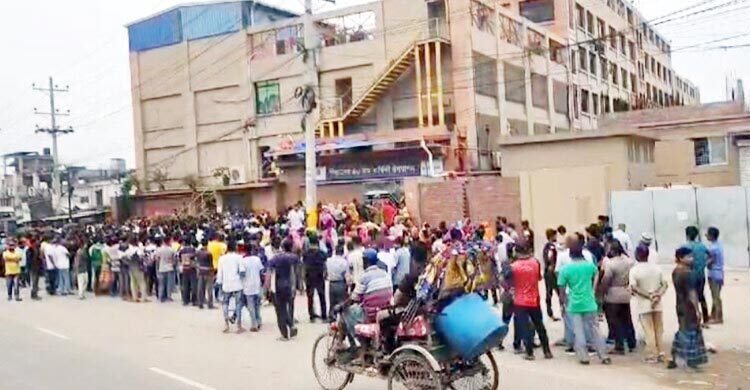Seeking jobs with sticks in hand

The clock strikes to 9:00am on September 3. The scene outside the old zone of Savar's Dhaka Export Processing Zone (DEPZ) is one of tension and confusion.
A crowd of men and women of varying ages gathers, their voices echoing demands for employment. Mobile phones are stowed away at the insistence of the protesters, who issue stern warnings to journalists and onlookers alike, urging them to retreat to safer areas.
Amid the crowd, attempts to breach the DEPZ are met with a heavy presence of security personnel. Conversations with agitators reveal an air of hostility. When one protester was asked about their demands, they erupted in anger, drawing the attention of others.
As the situation escalates, a blockade forms on the Nabinagar-Chandra road. Journalists attempting to cover the protest are swiftly identified and excluded from the area.
Almas, a young protester, begrudgingly spoke after a brief pause. He claimed the issue was the lack of job opportunities for men in garment factories, asserting that only women are being hired.
When asked if he had the necessary documentation for employment, he mentioned his papers were at home but would be brought if needed. His evasive answers raised questions about the legitimacy of the protest.
Local residents suggest that the nature of this labor movement is unusual. Unlike previous demonstrations, the current one is marked by high levels of anger and violence.
Reports indicate that protesters have vandalised clothing factories in Jamgra, Jirabo, and nearby areas, resulting in at least 30 factories declaring a holiday out of fear of further sabotage. Some protestors were also reported to be carrying batons.
Labour leader Arabind Bepari weighs in, suggesting that the current agitation is not driven by genuine labor concerns but rather by political motives. According to him, the actions of these protestors seem orchestrated to destabilize the government. He criticizes the protestors for ignoring proper procedures and engaging in vandalism, contributing to chaos in the industrial sector.
Khairul Mamun Mintu, another labour leader, echoes similar sentiments. He suspects a conspiracy involving fake traders and factory owners, urging the government to intervene to protect the sector.
In response to claims of discrimination in employment at DEPZ, Bepza reports that the workforce consists of 79,588 workers, with 40,818 females and 38,770 males—indicating a nearly even split.
Bepza Executive Director (Public Relations) Anwar Parvez asserts that Bepza has tried to address the protestors’ concerns with patience and understanding. However, he notes that different groups among the protestors are presenting conflicting demands, and many refuse to provide their CVs when requested.
Anwar Parvez adds that these protests are disrupting the normal operations of DEPZ, particularly as the new government seeks to restore order and stabilize the economy.
Ashulia Industrial Police-1 Superintendent Sarwar Alam confirms that efforts are underway to address the situation and manage the protests.
FA/NMA
